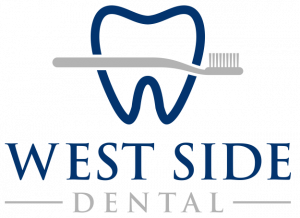Sealants
Sealants are applied quickly and painlessly to the biting surface of molars and premolars. The best time to apply sealants to your child’s developing teeth is right after an adult tooth has erupted.

Table of Contents
The best time to apply sealants is right after an adult tooth has erupted. Developing teeth have many tiny grooves and pits that can be too small for toothbrush bristles to effectively clean. The sealants do just that, seal off these grooves and pits to prevent cavities from forming when molars (used for chewing) hide leftover food and bacteria that can cause cavities!
How Do Sealants Work?
Sealants provide molars and premolars with a thin, protective coating that can help keep cavities from forming and may even stop early stages of decay from becoming a full-blown cavity. Sealants have been shown to reduce the risk of decay by nearly 80% in molars. This is really important when it comes to your child’s dental health!
Who Should Get Sealants?
Almost anyone (children and adults) can benefit from sealants, but the earlier you get them, the better. A child’s first molars start to erupt when they are around 6 years old, and second molars break through around 12 years old or so. Using sealants to protect these teeth as soon as they appear can help to protect them from cavities right away, which can save a lot of time and money in the future! Ask our team if sealants are a good option for you and your children at your next visit.
How Are Sealants Applied to Teeth?
Applying sealants is quick and easy! Your teeth will be cleaned and dried before placing an acidic gel sealant material on your teeth, to roughen up the tooth surface and help create a bond between your tooth and the sealant that will be applied. Then, your dentist will remove the gel with a quick rinse, and dry your tooth again before applying the sealant onto the grooves of your tooth. Finally, a special blue light will be used to harden the sealant.
Do Sealants and Fluoride Do the Same Thing?
Sealants and fluoride both prevent tooth decay, but in two different ways. Sealants work to keep germs and food particles out of the grooves in the back teeth by coating them with a safe protective layer. Fluoride in drinking water and dental products, such as toothpaste, protects against cavities by making teeth stronger. Find out if your city or town adds fluoride to your water by visiting this link from the CDC.
How Long Do Sealants Last?
Sealants can last a long time to continue protecting your teeth! At your regular dental exam, your dentist will check the condition of any sealants and can make a plan to reapply new sealants if needed.
Will My Insurance Cover Sealants?
The answer is: Possibly. It’s true that some dental insurance plans cover the cost of sealants, but it depends on your level of coverage. Please call your dental benefit company to find out what kind of coverage you have.
Where Can I Find More Information on Sealants?
You can find extra information about sealants here on Mouth Healthy, provided by the American Dental Association. In fact, here’s a great video they’ve provided on their site!
Source: American Dental Association (https://www.mouthhealthy.org/en/az-topics/s/sealants)
Sealants FAQs
Yes, sealants can be placed over fillings in certain situations. Sealants are typically applied to the chewing surfaces of teeth to protect against decay, especially in the grooves and pits where bacteria can accumulate. If the filling is intact and properly sealed within the tooth, placing a sealant over it can provide an extra layer of protection against future decay. However, a dentist needs to evaluate the specific condition of the filling and tooth to determine if applying a sealant is appropriate.
Sealants are not inherently bad for teeth; they are often beneficial in preventing tooth decay, especially in children and adolescents. Sealants create a protective barrier on the chewing surfaces of teeth, shielding them from bacteria and food particles that can lead to cavities. However, improper placement or maintenance of sealants can potentially trap bacteria and cause decay if not monitored carefully. Additionally, sealants may need to be replaced periodically to maintain their effectiveness. When applied correctly and maintained properly, sealants can be a valuable tool in maintaining good dental health.
Adults can get dental sealants, although they are more commonly applied to children and adolescents. Dental sealants are a preventive measure to protect the teeth from decay by sealing off the grooves and pits where bacteria can accumulate. While sealants are often applied during childhood, adults at risk of developing cavities or deep grooves in their teeth may also benefit from sealant application. However, the decision to apply sealants to adult teeth is typically based on individual risk factors and the recommendation of a dentist.
